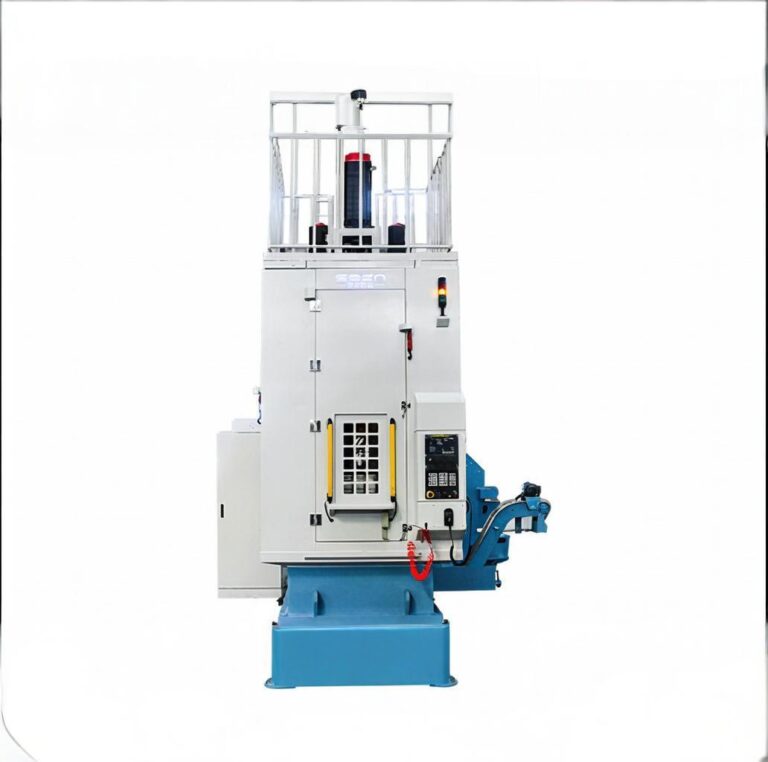Manufacturing is changing faster than I’ve ever seen in my career. Speed, accuracy, and efficiency are no longer a value-added proposition— they are the price of entry. In this kind of setting, you need to keep truckin’, and never more so than now. This is where the broaching machine, particularly the variety designed to operate continuously, enters the picture.
The machines have proved to be game changers in high-volume industries. They’re engineered to work quickly, consistently, and without interruption. For companies that rely on mass production, this kind of speed isn’t just handy — it’s mission-critical.
Let’s dig a little deeper to understand why these continuous broaching machines are so strong and how they’re enabling manufacturers around the world to get an edge.
Understanding Continuous Broaching
Continuous broaching differs from conventional broaching. Rather than doing one part at a time, the strategy enables the machine to process a series of parts in a steady stream. The parts must be fed on a track or a rotary. The broach tool enters, forms, and exits each in the same manner with precision and repeatability.
This method reduces idle time. There’s no pause between pieces. Every motion is optimized. “(The effect is) a reliable machine on which a large quantity of precision finished machine-ready parts can be produced with a minimal amount of operator intervention.”
Continuous broaching machines are a godsend in industries like automotive and aerospace (where countless identical parts need to be produced every single day).
Built for High-Speed Production
The speed is one of the greatest advantages of using a broaching machine with continuous operation. These machines are designed to move fast without sacrificing precision. Once it gets going, it doesn’t stop. You don’t have to stop between parts, change tools, or reset alignment.
This efficiency is particularly beneficial in cases such as forming splines, keyways, or grooves. These shapes require tight tolerances. Assembly issues can be caused even by the smallest mistake. Yet with consistent broaching, each part is held to the same standard, every time.
“Manufacturers who are dependent on just-in-time delivery models simply cannot afford the time delay,” he said. Both machines are continually in operation, so there is no backlog, and customers don’t have to wait.
Precision That Doesn’t Fade
It’s only effective if it’s accurate to cut quickly. Lucky for us, accuracy is also a strength with continuous broaching. Every movement of the tool is measured. All action is based on fixed rules. That amount of control yields results that are precise over thousands of cycles.
When that operation starts, a quick-return broach machine comes into play. These types of tools remove material in stages to form the finished profile. The path doesn’t change, and neither does the motion, so there is not much variation from part to part.
This repeatability matters. In areas such as defense or medical manufacturing, reliability is crucial. The quality maintained by our broaching machine ensures that each part fits the next on a tight delivery schedule.
Reduced Downtime, Increased Uptime
That is time lost setting up, resetting, or fixing machines, which eats into profits. That is why, though continuous broaching machines are so precious. Their design reduces downtime significantly.
The machine has a longer time between tool changes. Its feed systems are automated. It is generally compatible with conveyors, robots, or loading arms. And once it’s set up and calibrated, it can operate smoothly for hours — sometimes even days — with minimal human intervention.
This type of plug-and-play uptime enables teams to focus on quality control, material handling, or logistics. It is also good for lessening labor strain. The less hands-on intervention that’s necessary, the safer, cleaner, and more predictable jobs will be.
Versatile Applications Across Industries
A broaching machine that is not only fast but also difficult to operate limits its versatility. Broaching machines are prevalent in almost every industry, more than you probably realize. And not just in cars or planes — they are also used in agricultural equipment manufacturing, defense manufacturing, and in the production of components for energy.
They are particularly handy for projects involving gears, shafts, transmission parts, gun assemblies, and industrial fittings. All of these components demand high-volume precision and detail. A broaching setup can overcome both of these problems, largely due to its push broaching design.
These machines can also be quickly converted to new profiles, the manufacturer adds. Tooling can be customized. Machines can be reconfigured. That’s what makes them a playlist-worthy investment for high-volume production in any application.
Automation and the Broaching Industry of Tomorrow
Continuous broaching machines can easily automate automatic lathes. They are great for smart factories and Industry 4.0. A lot of them can be digitized, controlled, and remotely monitored, and embedded into a cloud-connected system.
This type of automation has resulted in fewer human errors. It is also traceable and can support real-time reporting, allowing you to track production figures, maintenance needs, and performance metrics on a single screen.
With industries shifting to autonomous production, the broaching machine is taking the lead. It’s not just a tool; it’s a platform for scalable, intelligent manufacturing.
Broaching Machines Provide What Today’s Manufacturing Needs
Modern-day manufacturers are under assault from every quarter. They need to generate more of it, more quickly, and with fewer errors. The so-called continuous broaching machine meets these requirements. It provides constant accuracy, high-duty output, and long-term reliability with minimum human intervention.
These machines are not only making parts. They create opportunity. And they enable companies to take on larger contracts, meet tighter deadlines, and scale up capacity without scaling up overhead.”
If you’re serious about efficiency and prepared to elevate your manufacturing game, it’s time to discover the power of continuous broaching. The difference speaks for itself—louder, cleaner, and more efficient.



